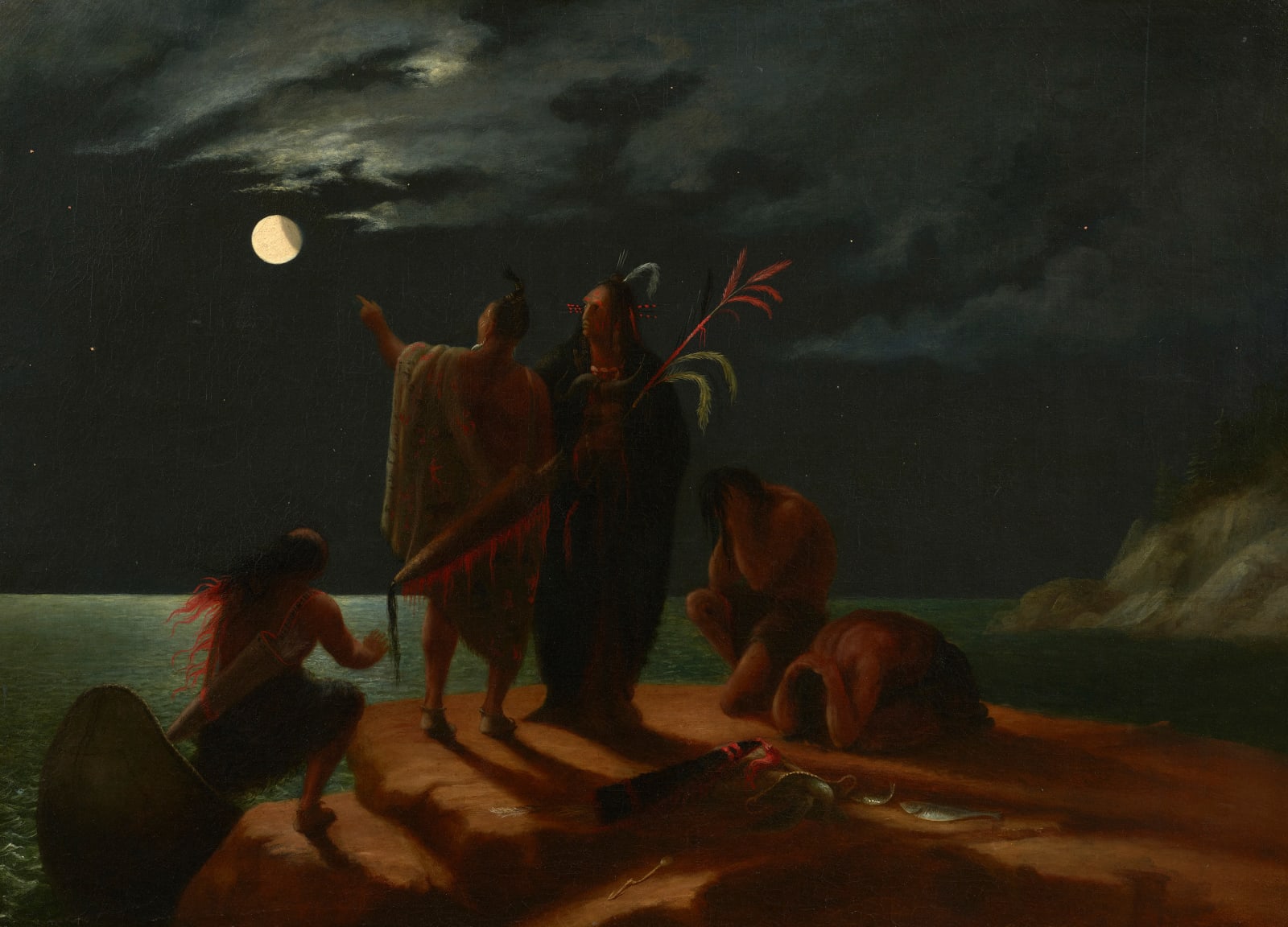William Rimmer
66.7 x 91.4 cm
This work is accompanied by a photo-letter of authenticity issued by Dr. Jeffrey Weidman, dated September 22, 1995.
A contemporary of George Caleb Bingham and Martin Johnson Heade, William Rimmer is regarded as one of the most talented and imaginative artists of the 19th century yet limited primary materials survive about his life and career. A trained doctor with wide-ranging artistic, literary and scientific interests, he applied himself to painting, life drawing and sculpture, and was well-known as a teacher of anatomy. His works explore allegorical, literary and historical themes that he often used as a metaphor to address the most serious issues of his time. The c. 1850 date for the painting has been established by the Boston canvas seller’s stencil on the verso, and Rimmer would have lived 15 miles south of the city at the time in the town of Randolph, Massachusetts.
In his catalogue raisonné of the artist’s work, scholar Jeffrey Weidman offers several reasons to support the attribution of Indians Experiencing a Lunar Eclipse to Rimmer, an assertion he confirms in a letter dated September 22, 1995. The painting relates stylistically to Scene from “The Tempest” and Scene from “Macbeth” (c. 1849, both Detroit Institute of Arts), two works that share an attribution to Rimmer and bear identical dimensions and the canvas stencil on the verso. Similarities with the Shakespearean pictures can be seen in the rendering of the figures and drapery, the treatment of the clouds in the night sky, and the use of the color red. Compositionally, all three pictures share the placement of figure groupings on an illuminated “stage” of bare ground where still-life objects are scattered and a gesturing figure directs the viewer to a night sky. In each of the present work and Scene from "Macbeth," the sky features an eclipsing moon. Weidman notes that a lunar eclipse was observed in the Boston area in 1848 although there is no documentation of Native Americans experiencing this astronomical event ("William Rimmer: Critical Catalogue Raisonné," Vol. II, Ph.D. diss., Indiana University, 1981, p. 476a). Rimmer may have imagined or heard about the event, and his rendering of the scene suggests a concern for the fate of the Native American people and their land against the forces of expansion.
Provenance
Private collection, New England (perhaps Massachusetts);[Heirlooms Unlimited Antiques, Captain Hadley House, Marion, Massachusetts]; to
Private collection, New York, 1966;
Estate of the above, 2021
Literature
Jeffrey Weidman, "William Rimmer: Critical Catalogue Raisonné," Vol. II, Ph.D. diss., Indiana University, 1981, pp. 476-78, no. 52, illus. no. 36Subscribe to our mailing list to receive updates from the gallery
* denotes required fields
We will process the personal data you have supplied in accordance with our privacy policy (available on request). You can unsubscribe or change your preferences at any time by clicking the link in our emails.

